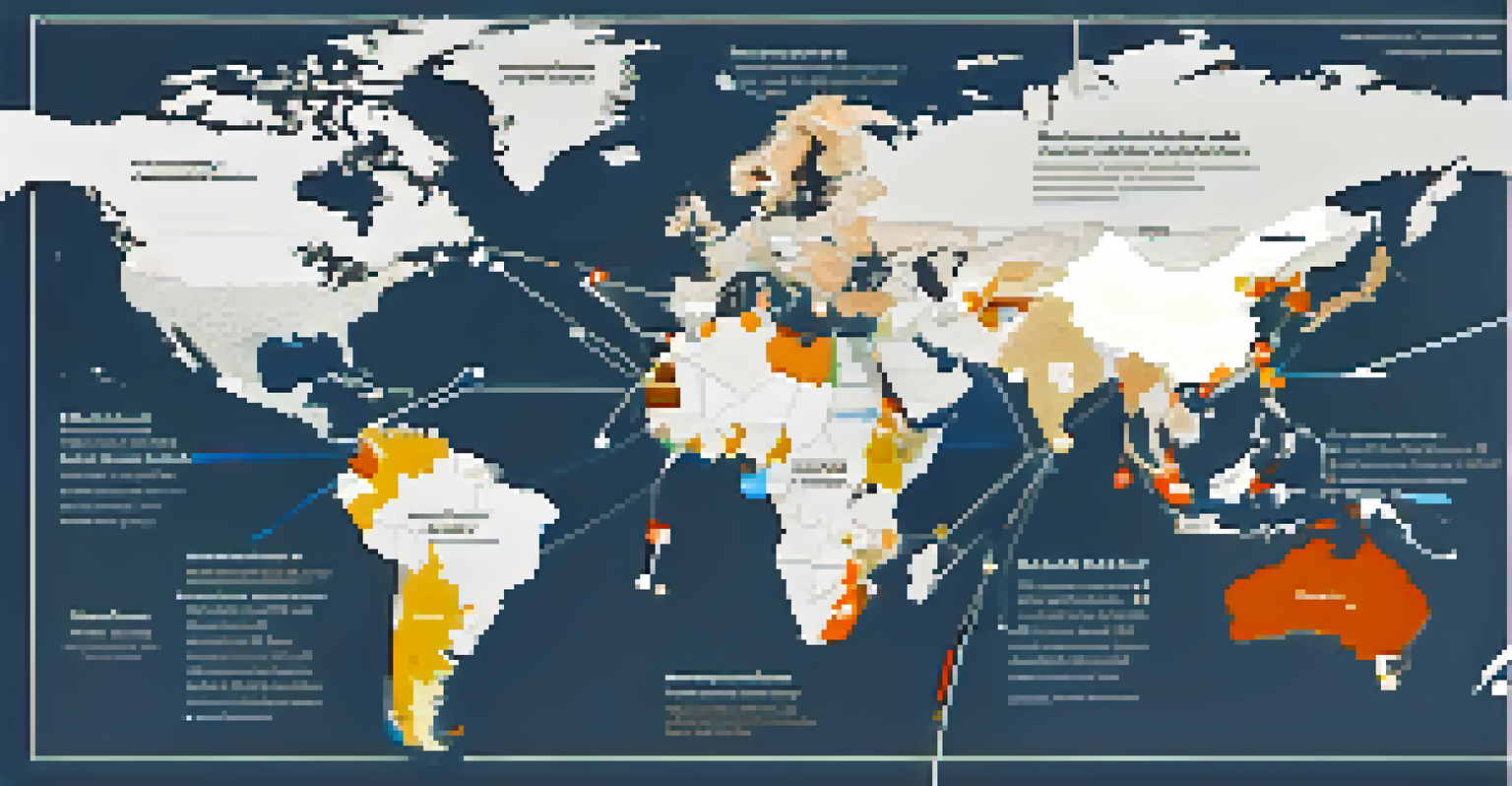Double Taxation Treaties: How They Affect Foreign Income Tax

What Are Double Taxation Treaties (DTTs)?
Double Taxation Treaties, or DTTs, are agreements between two countries aimed at preventing the same income from being taxed in both jurisdictions. These treaties help clarify tax responsibilities for individuals and businesses engaged in cross-border activities. By defining which country has the right to tax specific types of income, DTTs help reduce the likelihood of double taxation.
The hardest thing in the world to understand is the income tax.
For example, if you're a freelancer in the U.S. earning income from a client in the U.K., a DTT can specify whether the U.S. or the U.K. gets to tax that income. This clarity not only helps taxpayers save money but also encourages international investment and trade. In essence, DTTs create a more predictable tax environment for those operating across borders.
It's important to note that not all countries have DTTs with each other. The existence of these treaties can significantly influence where individuals choose to work or invest. Therefore, understanding DTTs is crucial for anyone dealing with foreign income.
How DTTs Affect Foreign Income Tax Obligations
DTTs typically allocate taxing rights over different types of income, such as dividends, interest, and royalties. This means that depending on the treaty provisions, taxpayers may only be liable for tax in one country, or they may receive a tax credit in their home country for taxes paid abroad. This can lead to substantial tax savings for individuals and businesses alike.

For instance, without a DTT, a U.S. citizen earning dividends from a U.K. company could face taxation in both countries. However, with a DTT in place, the U.S. may allow a reduced tax rate on those dividends, or even exempt them altogether. This not only lessens the tax burden but also promotes smoother international business operations.
DTTs Prevent Double Taxation
Double Taxation Treaties clarify tax responsibilities between countries to avoid taxing the same income twice.
Understanding the specific terms of a DTT is essential, as they can vary widely between countries. Taxpayers should consult the treaty provisions to ensure they comply with all obligations while maximizing their tax benefits.
Identifying Countries with DTTs
To determine whether a DTT exists between your country and another, you can typically check the tax authority's website or consult a tax professional. Many countries maintain updated lists of their DTT partners, which can be a valuable resource for taxpayers engaged in international activities. Knowing the countries that have treaties with your home country can help you make informed financial decisions.
Taxation is just a sophisticated way of demanding money with menaces.
For instance, if you're considering expanding your business into Europe, knowing which countries have DTTs with your home country could significantly impact your tax planning strategy. This information can guide you in choosing where to establish operations or target investments. It's like having a roadmap that helps you navigate the complex world of international taxation.
Additionally, various online databases and resources can provide detailed information about existing treaties, including their provisions. These tools can simplify your research and ensure you have the most accurate information at your fingertips.
Common Misconceptions About DTTs
One common misconception about DTTs is that they eliminate all taxes on foreign income. In reality, while DTTs can reduce or eliminate certain taxes, they do not completely exempt taxpayers from all tax obligations. For example, even with a DTT in place, you may still be required to file tax returns in both countries, depending on your specific situation.
Another misunderstanding is that DTTs are only beneficial for large corporations. In truth, individuals, freelancers, and small businesses can also gain significant advantages from these treaties. By reducing the tax burden on foreign income, DTTs create a more favorable environment for all types of taxpayers looking to expand globally.
DTTs Benefit All Taxpayers
DTTs provide significant tax advantages not only for large corporations but also for individuals and small businesses engaged in cross-border activities.
Lastly, some people believe that the existence of a DTT guarantees a tax refund. While these treaties can facilitate tax credits and reductions, the actual tax refund process depends on individual circumstances and compliance with tax laws in both countries.
Understanding Withholding Taxes in DTTs
Withholding taxes are taxes deducted at the source, often applied to income such as dividends, interest, or royalties paid to non-residents. DTTs frequently specify reduced withholding tax rates for these types of income, making it essential for taxpayers to understand how these provisions work. This means that if you're receiving passive income from abroad, the withholding tax may be lower than the standard rate due to the treaty.
For example, if a French company pays dividends to a U.S. investor, the withholding tax might be reduced from 30% to 15% under their DTT. This reduction can make foreign investments more attractive and financially viable for investors. As a result, both countries benefit from increased cross-border capital flow.
Taxpayers should keep in mind that proper documentation may be required to take advantage of reduced withholding tax rates. Failing to provide the necessary forms could result in the standard withholding rate being applied, which is why understanding the requirements is key.
Steps to Claim Benefits Under a DTT
Claiming benefits under a DTT typically involves a few essential steps. First, you need to ensure that you meet the residency requirements outlined in the treaty. This usually involves proving that you are a tax resident of the country with which the treaty is established. Documentation, such as tax residency certificates, may be required for this purpose.
Next, you must determine which types of income are eligible for tax relief under the DTT. Each treaty has specific provisions that outline which income types are covered and at what rates. Familiarizing yourself with these details can help you maximize your benefits while ensuring compliance.
Future of DTTs Looks Promising
As globalization increases, more Double Taxation Treaties are likely to be negotiated, adapting to new economic realities like digital taxation.
Finally, you will likely need to fill out specific forms and provide them to the relevant tax authorities to claim the benefits. This process can be complex, so consulting with a tax professional who understands international tax law can be invaluable. They can guide you through the paperwork and help you navigate any potential pitfalls.
The Future of Double Taxation Treaties
As globalization continues to grow, the landscape of double taxation treaties is also evolving. Countries are increasingly recognizing the importance of DTTs in fostering international trade and investment. This trend suggests that more treaties may be negotiated in the future, potentially leading to new opportunities for taxpayers.
Moreover, ongoing discussions about tax reform and digital taxation are likely to influence how DTTs are structured moving forward. For instance, as businesses adapt to a more digital economy, DTTs may need to address taxation on digital services and e-commerce. This could reshape the way income is taxed across borders.

Ultimately, staying informed about changes in DTTs is crucial for anyone involved in international income. By keeping an eye on developments and understanding the implications, taxpayers can better navigate the complexities of foreign income tax and seize opportunities as they arise.